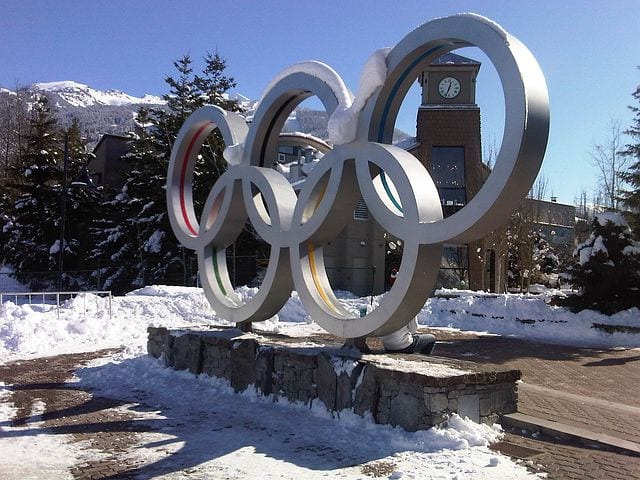As the Olympics are well underway, you can’t help but relish in the sports, events and most importantly, the Olympians’ stories. But what if I told you that not only did these Olympians struggle mentally and physically during training, they also face major financial struggles along the way?
To put it into perspective, every Olympic-hopeful has to train and go to numerous competitions to even reach the Olympic level, which often takes years to accomplish. Training, equipment, entrance fees and other payments, not to mention the cost of living and a healthy diet for an athlete, can involve a hefty price tag. As an article in the Huffington Post put it, “it’s easily a six-figure ‘investment’ — with no guarantee of a ‘return’ (meaning a medal or an endorsement deal) — when factoring in the costs of equipment, coaching and travel.”
With such a large investment, you can imagine that the United States Olympic Committee (USOC) takes up a percentage or a majority of the cost since these athletes are representing the United States. The USOC states on their website that they “support U.S. Olympic and Paralympic athletes on and off the field of play through programming such as direct athlete funding, health insurance, tuition grants, media and marketing opportunities, etc.” But a recent investigation by “Real Sports with Bryant Gumbel” of this non-profit proves otherwise.
Jonathan Cheever, an olympic snowboarder, spent $30,000 last year on training, equipment and flights to olympic qualifier tournaments around the world. To make ends meet and pay off his debt, he works as a certified plumber. In the last Olympics, Cheever received a $1,500 stipend and health insurance from the USOC. So here’s an Olympic athlete representing the U.S. by unclogging Joe Schmoe’s pipes right before he heads home to train. How is that fair to the athlete and how could he possibly balance his training and plumbing job? It’s impossible, and a $1,500 stipend covers almost nothing of what he racked up in debt and other financial obligations as well as physical burdens he must have gone through.
Mike Trapp, another Olympic snowboarder, received a $3,500 stipend with health insurance from the USOC but spent around $35,000. An improvement, I guess, compared to the compensation Cheever was given, but certainly not even close to what athletes should be given. To pay back his debt and save money for this year’s olympic games he fixed cars as a mechanic and started a GoFundMe page to bridge the gap of the money he still needed.
It’s common to see GoFundMe pages and other fundraising platforms filled with Olympians trying to pay their way to the Olympics. If you have athletes competing with other countries and representing the United States, they should be supported by the United States. These athletes shouldn’t have to be asking for money from the public like beggars on the street. Recent tax filings revealed that the USOC generated $200 million in revenue with over 10 employees being paid six figure salaries and the CEO earning over one million dollars last year. According to records, it is indicated that $10-12 million is given to athletes and the rest of the revenue is kept within the USOC. This equates to about six percent for the athletes.
A measly six percent for athletes who work tirelessly throughout their lives to make it to the Olympics and attempt to medal for the United States is shameful. What makes things worse is that this is not an issue for other countries. Most countries supply their Olympic Athletes with supplemental income funded by government money. But the USOC is not government funded which is where the main corruption stems from.
According to the USOC website, “93 percent of expenses are spent to support the U.S. athletes and the 47 National Governing Bodies.” National Governing Bodies are the governing bodies which cover the various sports the U.S. participates in. Each of these National Governing Bodies have paid employees and overhead charges, which is where the brunt of the money seems to be headed. So that means that the athletes who represent the United States aren’t paid well, but the white collars who are in charge of the rules and legislation get the big bucks for doing nothing but sitting behind a desk and crunching numbers. Meanwhile, Olympians like Trapp and Cheever are struggling to stay above the poverty line.
It seems to me that these athletes are at an unfair disadvantage. Not only do they not get compensated for their efforts like other countries’ athletes, but they are limited in their ways of success. How could someone possibly succeed in a high impact, high intensity sport without proper diet, access to adequate training and the weight of financial burden? It’s a feat in and of itself that the American athletes are doing so well under these circumstances. The Olympics are supposed to elicit pride in your country, especially for the U.S. which holds these athletes in high esteem. In reality, though, most of them will struggle to survive, let alone make it to the games to achieve their dreams.


